NEW STAR LODGE NO. 629
A RECONSTITUTED LODGE SHINES ANEW
COUNCIL OF NABLUS the
SAINT GEORGE DRAGON and




NEW STAR LODGE NO. 629
A RECONSTITUTED LODGE SHINES ANEW
COUNCIL OF NABLUS the
SAINT GEORGE DRAGON and




VOLUME LXIX MARCH 2023 NUMBER 3
Grand Encampment of Knights Templar of the United States of America.

David J. Kussman
Grand Master
David Studley
Grand Captain General and Publisher
Magazine materials and correspondence to the editor should be sent in electronic form to the managing editor whose contact information is shown below.
Ben Williams Managing Editor
1100 W Littleton Blvd Ste 440 Littleton, CO 80120
Phone: (720) 328-5343
Fax: (720) 328-5297
E-mail: ben@knightstemplar.org

knightstemplar.org
© 2023 Grand Encampment Knights Templar

Published for the Grand Encampment of Knights Templar of the United States of America by Laughing Lion

ADDRESS CHANGES AND CHANGES IN MEMBERSHIP
Please report all changes in membership to the Grand Recorder:
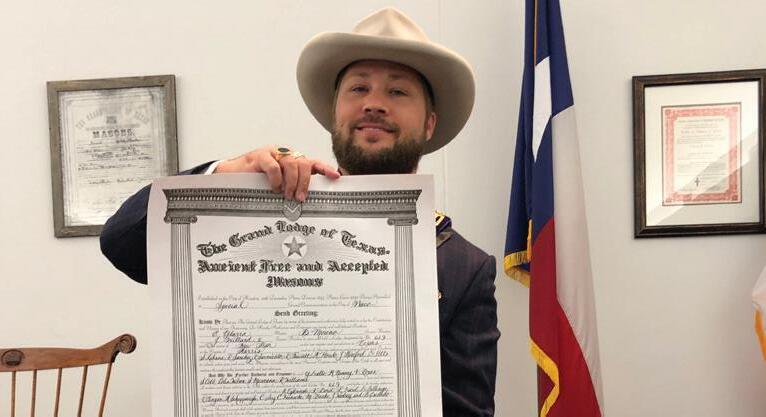
Grand Recorder
Grand Encampment Office
3 Sugar Creek Center Blvd Ste 410
Sugar Land, TX 77478
Phone: (713) 349-8700
Fax: (713) 349-8710
E-mail: larry@gektusa.org
Spring restores light to the world. In many early calendars, spring signaled the new year – heralded by the vernal equinox. For thousands of years, some of the oldest monuments to civilization show, humankind has marveled at the stars and counted the seasons they bring. So it is that King Solomon reminds us, “to everything there is a season.”
And now a season of this magazine is ending. But don’t worry, the Knight Templar isn’t going anywhere – like the world around us, it’s just changing, growing, emerging new leaves.
If everything goes according to schedule, June will mark the final monthly issue of the Knight Templar. The next issue thereafter will be a full-sized magazine (8.5" x 11") published in September. Quarterly publications will then fill out the cycle. We feel this is the right move for the magazine and for our Order. We hope you agree.
We’re not naïve. We know it’s going to be a challenge. Change is always difficult. But know that we’re going to work hard to make the transition as seamless as possible. Just bear with us. Know that we’re doing our best to bring you the very best magazine we can. There’ll inevitably be hiccups. And nothing is permanent: we can always reassess. Revert back. Change. Move forward. Evolve. Experimentation is necessary to adapt to change.
We recognize the Knight Templar is not just a magazine. It’s our voice, our message, our brand. In some respects, it’s what binds us together as Templars. Our commonality in which to share Templar culture. Thus, we will strive to bring you relevant content – across all bodies of our Masonic family. If it is of interest to Templars, then it should be applicable for these pages (as long as it doesn’t conflict with our editorial policies, of course).
That means you might see current events, general interest, human interest, and other pieces along with the usual historical emphasis that has predominated our content for many years. No doubt, the history of Templary is highly relevant – but so too is the future. We must also look forward.
On that note, we have set out a survey asking you, our readers, what you would like to see in the Knight Templar. Please visit knightstemplar.org and click on the “Magazine Survey” link. Your feedback will be invaluable. Please take ten minutes to share your thoughts with us. We’ll be closing the survey May 1. Thanks for participating.
Sir Knight Ben Williams Editor
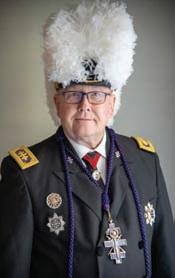
My faithful Knights, This month marks the completion of my first year of service to you as Grand Master of our Grand Encampment. At this time of personal reflection, I was reminded of a phrase I embraced during my life as a law enforcement practitioner: “Who’s got your back?”
These four words, when spoken together, hold a tremendous amount of truth and power. While their relevance is obvious for law enforcement, their special significance in our fraternal environment is perhaps less recognizable.
A battle exists for all of us in our lives, every day. Life is challenging at all ages and phases, and we cannot make it on our own. We need the support of others to know in our hearts that we are not alone. This is the strength that can enable one to continue –to press on and face difficult situations and challenges.
This was the principle upon which our newest program within the Grand Encampment was established. The Commissioned Templar Chaplain Program was launched in December 2022 and was conceived from the Bible: Mark 2:1-12, often referred to as the “Stretcher Bearer.”
Information about the course is on the Grand Encampment website (knightstemplar.org). I encourage you to explore this
opportunity to become of even greater service to our Brethren, Companions, and Sir Knights. Over one hundred and twentyfive Sir Knights have enrolled in the program since the start of the new year.
My beloved Knights, people who hurt are on stretchers. To hurt is bad enough, but to hurt alone destroys people – physically, mentally, and spiritually. The knowledge of this truth, and my own experiences a year ago, led me to request our Religious Activities Committee, under the stewardship of our three exceptional Grand Prelates, to create our Commissioned Chaplain Program. I invite you to explore its value and rewards within your home Commanderies and other Masonic bodies.
Thank you, Sir Knights, for your continuing support of our Grand Encampment and for having my back.
“There are friends who pretend to be a friend, but there is a friend who stands closer than a brother” (Proverbs 18:24).
Our journey continues…
David J. Kussman, GCT Grand Master“I am he that liveth, and was dead; and behold, I am alive for evermore. Amen; and have the keys of hell and death.”
Revelation 1:18
Later in Revelation Chapter 13, the Apostle John writes of Jesus as “the Lamb slain from the foundation of the world.”
As Children of God, we are covered by the shed blood of the Lamb. He was the sinless substitute for our sins, He was the undefiled one, the Holy One. He was the “word who was made flesh and dwelt among us.”
By Faith men and women come to Him, by the Holy Spirit He calls His own to a life of repentance and right living. Our greatest good is found only in Christ; the deepest longing of our hearts is only found in Christ; in Him is our hope fulfilled. In this world of growing darkness, His is the Light that dispels the darkness and reveals the truth.
As we prepare for Easter, my prayer is that God gives us desires after His own heart, molding us daily into His good vessels, delighting in His Word, joining our hearts in songs of praise to Him and placing a growing hunger – for not only hearing, but understanding His Word – that through a daily recourse to Scripture, we find ourselves strengthened for all God calls us to do!
Our lives become living sacrifices to the Lord; through fear and trembling we avoid the snares of sin, never making peace with sin nor allowing it to find a place in our lives. Through the blood of the Lamb, we are
a redeemed people, let us “Shout to the Lord songs of praise and thanksgiving.”
Jesus said of Himself, “I am the resurrection, and the life: he that believeth in me, though he were dead, yet shall he live: and whosoever liveth and believeth in me shall never die.”
Lord, we long to hear from You – to find our peace in You. May we be found seeking you, our eyes and heart turned towards you; our greatest good comes only from You. Jesus our Savior, our prophet, priest, and King; may we know You more, desire You more; rule over us and reveal Your Word to us that we might understand the life You have called us to in You. Amen.
Terry Sir Knight Terry L. Plemmons Grand Prelate
George Washington Masonic National Memorial
Arlington, Virginia
Headquarters Hotel
Hilton Crystal City at Washington Reagan National Airport 2399 Je erson Davis Highway
Arlington, Virginia
Room Rate: $113
Parking: $20
Make reservations directly with hotel at (703) 418-6800. Mention “Knights Templar.”
Hotel reservations link is available at www.knightstemplar.org
Meals
Banquet: Saturday, April 8, 2023, Hilton Crystal City at Washington Reagan National Airport
Meal Package: $75 per person.
(Includes Saturday Banquet and Sunday Morning Bu et.)
Saturday Banquet only: $60
Sunday Breakfast Bu et only: $20
Ticket order forms are available online at www.knightstemplar.org.
Call the Grand Encampment o ce at (713) 349-8700 to pay by credit card.
Mail ticket orders with check made payable to “Grand Encampment” to: 3 Sugar Creek Center Blvd Ste 410 Sugar Land, TX 77478
Hotel and meal package cuto is March 1, 2023. NO TICKETS WILL BE SOLD AT THE DOOR.
Grand Commanders and their ladies are invited to attend the Saturday Banquet as guests of the Grand Encampment. Reservations must be made in advance with Grand Encampment.
Breakfast Bu et: 5:30 am. to 6:30 a.m.
Buses begin departing hotel: 6:30 a.m.
Parade step o at: 7:40 a.m.
Easter Memorial Service: 8 a.m.
Buses return: approx. 9:30 a.m.
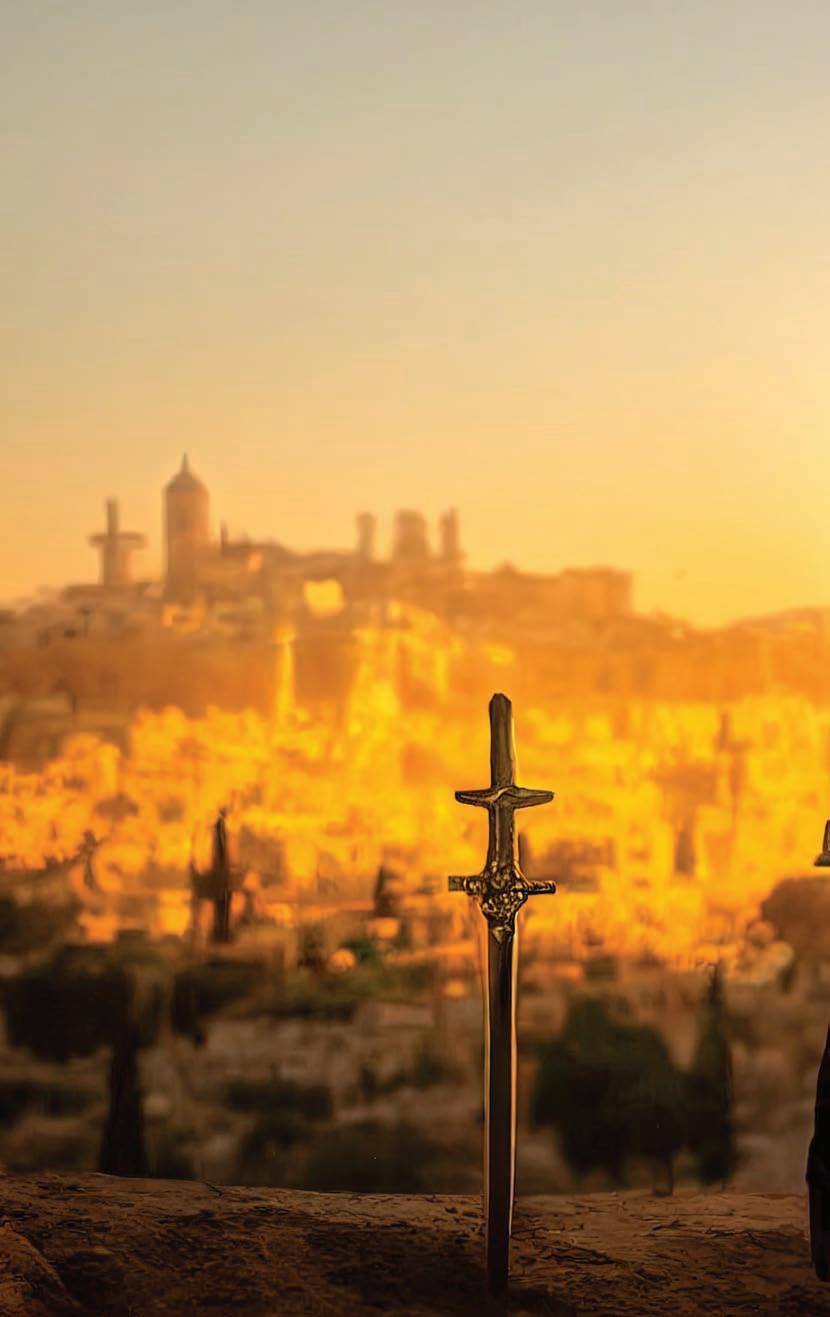 by George Marshall
by George Marshall
On January 16, 1120, a combined ecumenical/royal council was convened at the town of Nablus, about 30 miles to the north of Jerusalem, by Warmund, Patriarch of Jerusalem, and Baldwin II, King of Jerusalem.
This council produced twenty-five canons (that is, laws or rules or regulations) for the religious and moral conduct of the subjects of the kingdom.
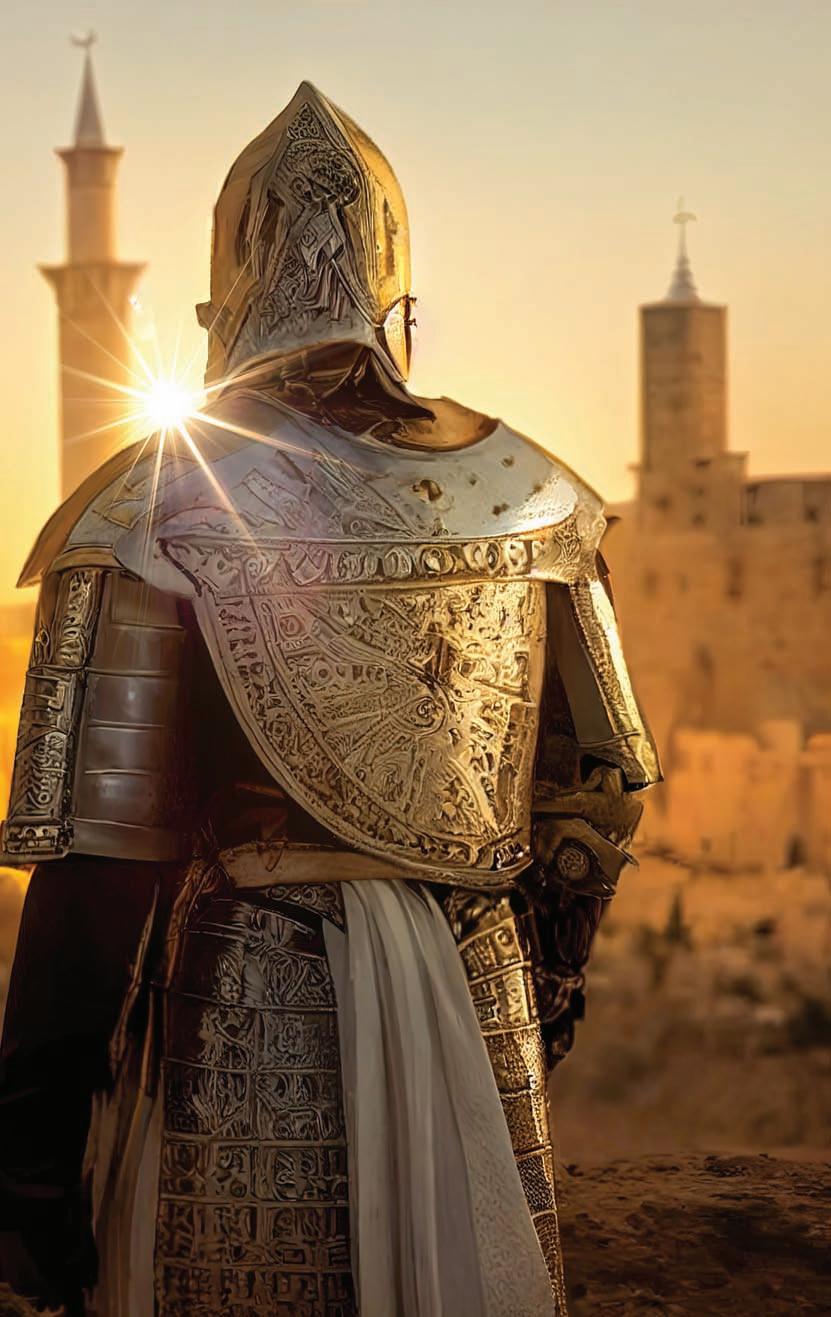
The canons begin with the reasons for calling the council: Jerusalem had been plagued with locusts and mice for the past four years, and the Crusader states in general were suffering from repeated attacks by the Muslims. It was believed that the sins of the people needed to be corrected before Jerusalem could prosper.6 Yet this council and its canons have received scant treatment by the authors on the Crusades in general and the Knights Templar in particular. The two main primary sources on this era, Fulcher of Chartres and William of Tyre, are also surprisingly mute regarding the council or the canons. Fulcher, who lived in Jerusalem from 1100-1127 and wrote a detailed history, says absolutely nothing. William, who wrote his narrative from about 1170 to 1184, summarizes the introduction to the canons and gives a list of the participants, skips the canons, and says they may easily be found in the many churches of the kingdom.
As it turns out, the introduction, list of council signatories, and the canons themselves, were at length located in a codex lo cated in a church at Sidon – this codex having been apparently created in the middle or second half of the twelfth century – and eventually made its way into the papal library at Avignon by 1330 and from there into the Biblioteca Apostolica Vaticana (Vatican library in Vatican City).3
It is not the intention of this article to go into detail about the council or the canons. For an excellent discussion on this topic, the interested reader is referred to source 3 in the Endnotes. What I am going to discuss is whether one of the canons, number 20, gave the Templars a license to kill infidels in Outremer. I will attempt to show that it did not.
When modern authors of articles or books on the Templars mention the Council of Nablus at all, they often infer that canon 20 was a green light for the Templars to slay
Muslims. For example, in The Templars: The Rise and Spectacular Fall of God’s Holy Warriors, Dan Jones tells us that, “Tucked among these [canons] was a dictum that would be of fundamental importance to the origins and history of the Knights Templar. It was canon 20 . . . this was significant indeed . . . the notion – and fact – that religious men under arms might serve as a central plank in the defense of the crusader states.”1 Another author, Hodge, apparently thinks all the canons were “rules” for the Templars: “…the Council of Nablus . . . established 25 rules for the Templars, including . . . [canon 20] . . . emphasising the requirement for these holy men to fight for their faith.”2
Before presenting my arguments that canons 20 (and 21) were not applicable to the Templars as they existed at the time the canons were written, we will examine just what they say. (For those of you who have forgotten your Latin, I have also provided an English translation.)
Si clericus causa defenssionis [sic] arma detulerit, culpa non teneatur. Si autem milicie aut alicuius curialitatis causa coronam dimiserit, usque ad predictum terminum ecclesie id confessus coronam reddat et deinceps secundum patriarche preceptum se habeat. Si autem amplius celaverit, pro regis et patriarche consilio se contineat.
If a clerk [cleric] carries arms for the purpose of [self] defense, he is not bound by guilt. If, however, he releases the crown [clerical office] for the sake of chivalry or some courtesy, let him return the crown, confessing it to the aforesaid term of the church, and afterward, according to the order of the patriarch. But if
he conceals it any longer, let him keep himself in accordance with the advice of the king and the patriarch.
Si monacus aut regularis canonicus apostataverit, aut ad ordinem recurrat aut ad patriam redeat
If a monk or regular canon apostates, he either has recourse to the order or returns to his homeland.

Briefly, we know that the Templars were founded by the knight Hugh de Payens and several others in 1119. (According to William of Tyre, Hugh’s original plans
were to serve in the royal army and then to retire from soldiering to become a monk.) But this group of knights formed a brotherhood vowing to defend pilgrims on their way to the holy shrines from the numerous bandits who infested the routes along which the pilgrims were required to travel. The knights also wished to assist in defending churches and shrines from bandits and marauders. They had sworn oaths of obedience to Gerard, prior of the Holy Sepulchre, who provided for their daily sustenance and needs. Thus, at the time of the Council of Nablus, the Templars were not strictly clergymen, i.e. clerics, “but rather able-bodied warrior pilgrims who could fight and who had made a significant decision to live a

quasi-monastic life of penitence, poverty, obedience, and duty beyond the normal vows of a crusader.”1 They would officially become a monastic order later – at the Council of Troyes, in January 1129, when Bernard of Clairvaux championed their cause and drew up a Latin Rule for their government. Further, as Tony McMahon informs us in Were the Knights Templar Really Monks?:
“The Templars were never actually ordained as priests. The knights went through some form of initiation and took the monastic vows of poverty, chastity and obedience. But they did not have the powers of a priest to administer the holy sacraments. A Templar knight could not give communion for example. One reason for this was that priests were not allowed to go into battle and kill – which obviously Templars did routinely. Pope Innocent II (1130-1143) reigned during the early formative years of the Templar order. He ruled that the Templars needed ordained chaplains who had received holy orders before joining a Templar house. They could minister to the Templars’ religious needs but under no
circumstances could they take to the field of battle.”7

The fact that the Templars were not yet clerics at the time of the Council of Nablus illustrates an important point. As Benjamin Kedar tells us in On the Origins of the Earliest Laws of Frankish Jerusalem: The Canons of the Council of Nablus, 1120, “The first part of canon 20, which says that a cleric who carries arms for the sake of defense (causa defensionis) must not be held culpable, is one of the most original, and boldest, enactments of the Council of Nablus, since this legitimization of the use of arms by clerics, though limited to defense, ran squarely in the face of prevailing church rulings. No matter how widespread clerical recourse to weapons might have been, the church’s opposition was unmistakable. Pope Nicholas I (858-67) ruled that clerics should not defend themselves in a manner different from the one demonstrated by Christ (who forbade Peter to use the sword in his defense) and advised that clerics who killed a pagan while defending themselves should lay down their sacerdotal office. In 1209 Pope Innocent III, having quoted the Roman legal maxim that permits the use of

force in self-defense, went on to note that, for clerics, such use entails irregularity. But the newly established Frankish Outremer witnessed emergencies so extreme that even clerics had to be pressed into military duties. As an example, when Roger of Antioch fell in battle on 27 June 1119, the greater part of his army perished, and Antioch remained with almost no defenders; Patriarch Bernard then ordered that monks, clerics, and laymen should guard the city’s towers. The patriarch himself, ‘with his armed clergy and knights’, repeatedly made the rounds of Antioch’s gates, towers, and walls. Walter the Chancellor, an eyewitness, emphasizes that it was the assumption of military functions by the clergy that preserved the city intact until the arrival of King Baldwin II of Jerusalem. The plight of Antioch in the preceding summer is mentioned in the introduction to the canons of Nablus; its defense by clerics and monks must have been fresh in the minds of Baldwin II and Warmund when they formulated the first part of canon 20.”3
Moreover, canon 20 clearly calls for action only in the cause of self-defense. As we know, not only did the Templars engage
in self-defense but on several occasions went on the offensive against the enemy.


Thus, it seems that canon 20 was not giving the Templars a license to kill since, first, it applied to clerics (that is, ordained clergy) and, second, it was only to be valid in the case of self-defense – not licensing offensive action.
The second part of canon 20, which could possibly be construed as applying to the Templars as well as to secular knights, and canon 21, although not applicable to the Templars at the time, are interesting in their own right. As Kedar informs us, “The canon’s second part deals with a cleric who abandons his tonsure in order to become a knight, and it lays down that he must confess his misdeed by the first day of Lent and revert to his original status. Thereafter the patriarch will decide his fate. Should he attempt to conceal his desertion beyond the said date, his fate will be determined by the king as well as the patriarch. Canon 21 deals with the related issue of a monk or a canon regular who leaves his order; it enjoins him to revert or to leave for his country of origin, evidently beyond the sea. It is noteworthy
that while in the contemporaneous West such illicit mobility from an ecclesiastical to a worldly mode of life was penalized by excommunication, the Nablus canons do not call for this punishment in the above two cases, or in any other case. Expulsion beyond the sea, not excommunication, is the means repeatedly employed to preserve the kingdom’s new society from contact with deviants.”3
Upon examination, the canons were not rules specifically for the Templars but rather for all the inhabitants of the Kingdom of Jerusalem, both Christian and Muslim. Those who signed as witnesses to the canons were mostly ecclesiastics, with a few secular nobles:
Warmund, Patriarch of Jerusalem
Baldwin II, King of Jerusalem
Ehremar, Archbishop of Caesarea
Bernard, Bishop of Nazareth
Ansquitinus, Bishop of Bethlehem
Roger, Bishop of Ramla
Guildoinus, abbot-elect of St. Mary of the Valley of Josaphat
Peter, abbot of Mt. Tabor
Achardus, prior of the Temple
Arnaldus, prior of Mt. Sion
Girardus, prior of the Holy Sepulchre
Pagan, chancellor of Jerusalem
Eustace Grenier, Lord of Caesarea and Sidon, constable of Jerusalem
William de Buris
Barisan, constable of Jaffa
Baldwin, Lord of Ramla
The signatories appear after the introduction, before the list of canons begins.6 As far as is known, none of the signatories were Templars.
There is some argument as to whether the canons were ever enforced. Kedar believes that the canons were put into practice in the twelfth century, although other scholars disagree, since the canons were not included in the Livre des Assises de la Cour des Bourgeois and other Assizes of Jerusalem, which were written in the thirteenth century.6
1. Jones, Dan, The Templars: The Rise and Spectacular Fall of God’s Holy Warriors, Penguin Books, 2017, New York, NY, pp. 29-30.
2. Hodge, Susie, “Rise of the Knights Templar”, in All About History, Vol. 110, November 2021, p.31.
3. Kedar, Benjamin Z., “On the Origins of the Earliest Laws of Frankish Jerusalem: The Canons of the Council of Nablus, 1120”, in Speculum, Vol. 74, No. 2, April 1999, pp.310-335.
4. “Council of Nablus”, Wikipedia article, online at http://en.wikipedia.org/wiki/Council_of_Nablus. Accessed January 5, 2022.
5. Mayer Hans E., “The Concordat of Nablus” in Journal of Ecclesiastical History Vol. 33 , October 1982, pp. 531-533.
6. “Council of Nablus-History”, online at http:// liquisearch.com/council_of_nablus_history/.
7. McMahon, Tony, “Were the Knights Templar Really Monks?”, online at http://thetemplarknight.com/2011/07/27/templar-monks/, July 27, 2011. Accessed January 6, 2022.
8. Frale, Barbara, The Templars: The Secret History Revealed, Simon & Schuster, May 1, 2011.
9. “Council of Troyes”, Napier, Gordon, The Pocket A-Z of the Knights Templar, History Press, 2014, p.114.
Sir Knight Marshall, PGC, KGC, is a Past Grand Commander of the Grand Commandery of Alabama and currently serves as chairman of the Grand Encampment Knights Templar History Committee as well as on the Editorial Review Board of the Knight Templar magazine. He can be reached at geomarsh@ yahoo.com.


Nowhere flies its flag like Texas. The Lone Star unfurls its rays proximate Old Glory: In the field of stars, there is a sun ablaze with Texan pride. You can’t see her up here, though, circling above Lake Houston or Trinity Bay, incoming on a southern approach to George Bush International Airport.
Instead, through the oval window, across the plane’s wing spread like a knife, the horizon slices a grayish sky from the gulf, blue-brown out there in the distance. Then the arrays of pipes and furnaces, a tangle of pressure vessels, storage tanks, spindles and spokes, in jagged right angles sputtering flames. Oil refineries entangled in thickets scratched around the jigsaw puzzle of suburban expanse. Houston is founded on oil.
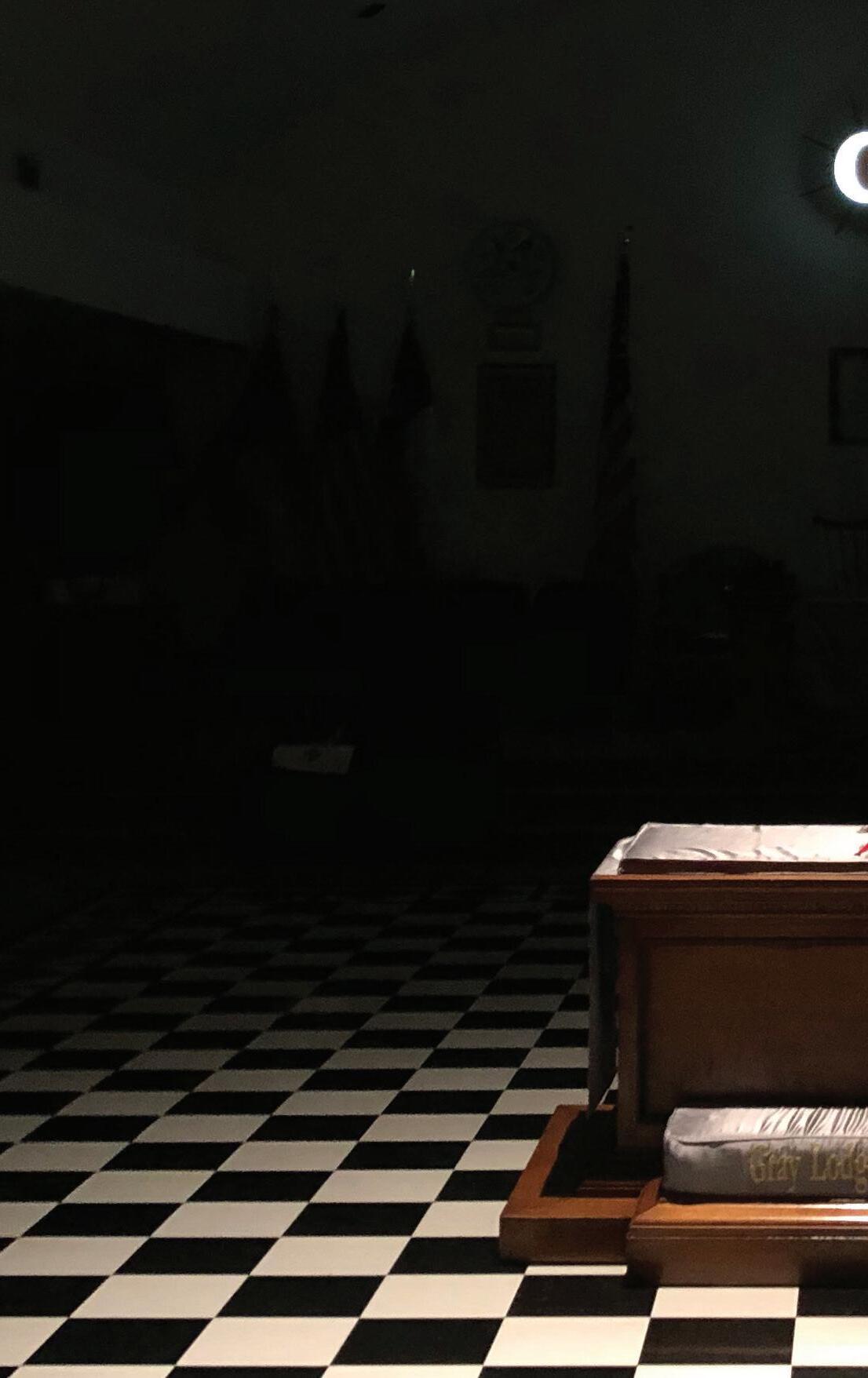
The extent is mesmerizing. At 665 square miles, Houston is massive. It’s three times the area of Chicago. There are larger cities (by area of incorporation): Sitka in Alaska (2,870 square miles); Juneau, Alaska (2,704 square miles), and so on, but only Jacksonville, Florida is as urbanized – and
127 square miles of Jacksonville are water. Houston crushes Los Angeles, long the epitome of urban sprawl: In Houston, the ring roads have ring roads. Houston is important to Masonry in Texas. Not only because it was named after M.W. Bro. Sam Houston, General for the Republic of Texas, whose considerable efforts secured Texan independence, but because the Grand Lodge of Texas was formed in Houston in 1838, with the eponymous Sam Houston as its first Grand Master. It’s the only Grand Lodge in the U.S. to claim
descendance solely form the Antient’s Grand Lodge, formed at the Turk’s Head Tavern in London in 1751.
In 2019, after decades of declining membership worldwide, the Grand Lodge of Texas still reported nearly 70,000 members. Today, your correspondent counts twentyfour Lodges circumscribed by Route 80 in the greater Houston area.
In less than twenty-four hours, that number will be twenty-five.
I’ve come to Houston to speak at Gray Lodge No. 329, Houston’s second oldest
Lodge. It’s a prestigious institution: the most shared picture of a Lodge room online is Gray Lodge – you’ve seen it: altar fully centered, that checkered pavement feathering into blackness beneath a domed ceiling and the inevitable letter G. Portraits of its many Past Grand Masters adorn the walls.
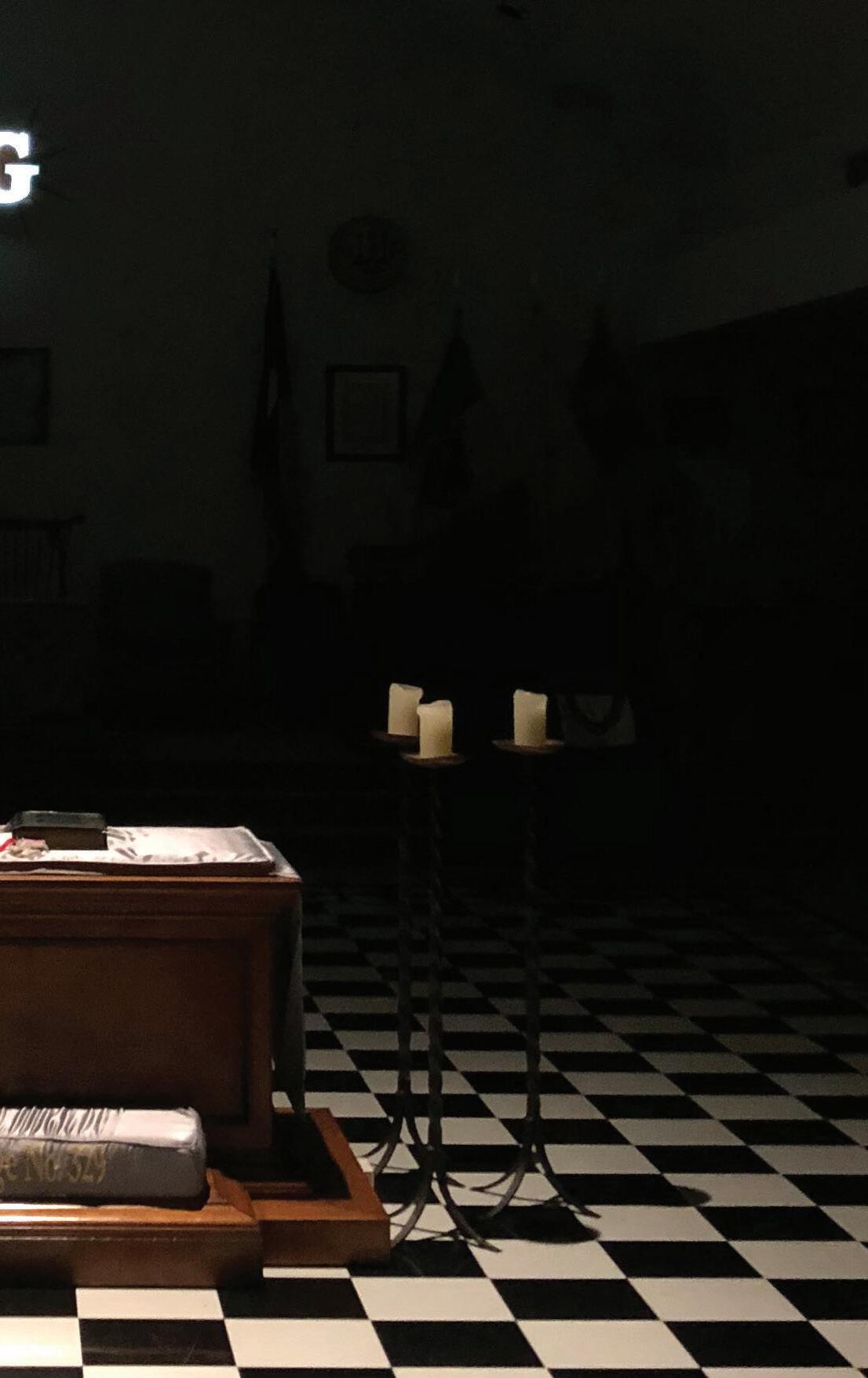
Unbeknownst to me, though, a rare event is scheduled prior – the reconstitution of a defunctive Lodge. Years in the working, New Star Lodge No. 629 is about to be reborn. About the ecliptic, time is a circle: what was old is new again. And newness births rediscovery.
New Star Lodge was chartered as number 629 on Friday, 16 December 1896, in Chinerno, Nacogdoches County, Texas – a lunar Lodge meeting on or before the full moon each month. Chinero is in east Texas, about thirty miles west of the Louisiana line as the crow flies. In 2021, its population was 369 and falling. The city proper comprises only about two square miles. After almost forty years of activity,
 17
knight templar
17
knight templar
sometime around the end of 1935, New Star Lodge was destroyed by fire. Picking through the embers, attempts to reorganize were faltering. After requesting a new charter from the Grand Lodge in early 1936, and divesting some assets to cover a new location, the record shows the Lodge formally disbanded, surrendering its charter on 23 August 1936. At its demise, it counted forty-two members on the rolls – not bad for such a small town.
Fast forward seventy-plus years, and impetus to reconstitute New Star surfaced among a group of Masons courting further light.
“The discussion to form a Lodge that prioritizes education and fraternity during its meetings and festive boards has taken place between many of us for years,” New Star’s new Master, Erickson Ybarra, says via email. But “[t]he formal discussions of reconstituting a Lodge for this purpose began in January 2022 between Roberto Sanchez, Billy Moreno, and myself.”
Ybarra explains that reconstituting a lodge is easier than forming a new one. “Constituting a new Lodge involves a lot of red tape and much more time than resurrecting an old one in Texas,” Ybarra says. “To reconstitute a Lodge in Texas, you have to choose a demised Lodge that (1) voluntarily surrendered its charter and (2) you reasonably believe none of its old members are still living, among other requirements.”
The Grand Lodge of Texas provided the Brethren with a list of demised Lodges, but many of those had had their charters pulled for one reason or another, “so this drastically narrowed the options,” Ybarra says.

“We had a handful of options to choose from, but I think we wanted one with an interesting name that we could tie back to both our Craft and our intention. I proposed choosing ‘New Star Lodge No. 629’ and the other guys were on board. To me, the name also instills a perception of something new or
different rising into the Fraternity, at least in our city of Houston.”
I was greeted at Houston airport by Roberto Sanchez. We made way through the traffic and Roberto explained to me the schedule – that tomorrow, at Gray Lodge No. 329, New Star was to be reconstituted prior to the meeting of Gray Lodge later that evening. “Would you like to come?”
“Giddy up,” Roberto smiled.
The acoustics in Gray Lodge reverberate under the barrel ceiling. It’s a remarkable effect – the East is readily audible without amplification and you have to be careful whispering on the sidelines because, through some curious effect akin to the whispering walls in medieval cathedrals (where clerics could converse at opposite ends of the nave without anyone noticing), words
carry. When the Master strikes the sounding plate, the gavel cracks like a gun. The West is tamped some, a lower ceiling above, cropped north-south; and the South more so, the ceiling spanned east-west along the sides of the room. The effect is like an echo, signaling space – a shot from the East resonates, then an answer from the West, succeeded by the South. A sense of distance and magnitude informs the confines of the lodge.
The Grand Lodge officers are present, and they proceed to reconstitute new Star Lodge No. 629 in due and ancient form. “It is a rare occurrence to recharter a Lodge in Texas; you have to have a vision for creating a different kind of Masonic experience not already being offered, the imagination to fabricate the Lodge culture to support it, the spark of excitement to persuade enough members to join, and the passion to carry the plans laid down into execution,” says Brad
knight templar
Billings, Grand Master. He’s never reconstituted a lodge before. I’ve never seen it done either.
The Grand Master and Grand Wardens open the Most Worshipful Grand Lodge of Texas, emplacing necessary jurisdiction in thought, word, and deed, through time and space, and with the necessary words sanctify actuality in speech. The result is creation. Although nothing has changed – we’re all still standing in the same room – a new star adorns the firmament. The power of speech –of belief and agreement – manifested in that place a concept, invisible, but palpable. The Lodge breathes, animated by its members, a product of sensible speech directed with purpose. The Brethren take their stations and places, and for the first time in 86 years, the Great Light is caused to shine in New Star Lodge No. 629.
Light is added to light.
“It’s not that I was unhappy with my mother lodge experience,” Worshipful Brother Ybarra tells me, “but I wanted something different and more meaningful. I read a lot about the symbolism and meaning in Freemasonry before I joined and going through the degrees only pushed me farther down the rabbit hole.”
Ybarra is clear: “One thing I definitely don’t want is for New Star to be misunderstood and, in turn, foster a resentment or reputation of being a ‘snobby’ or ‘elitist’ lodge. The idea is that we comply with the letter of Masonic law under the Grand Lodge of Texas, but with more intention and focus on providing an atmosphere that will nourish the minds and spirits of our members.”
To these Brethren, and many like them, Masonry is not just a social affair. Of course, that is part of it. But standing in Gray Lodge, looking at the new officers of New Star Lodge No. 629, one can’t help but feel enthusiasm for the Craft, rekindling somewhere, lucid in the eyes – a working collec -

tion of men, without guruism or entitlement, working together in search of further light in Masonry. In such a group, individual efforts are magnified. Here, men can assemble and share ideas without prejudice; they can entertain ideas without accepting them. This is the place where discoveries are made. Where understanding is reached in mutual
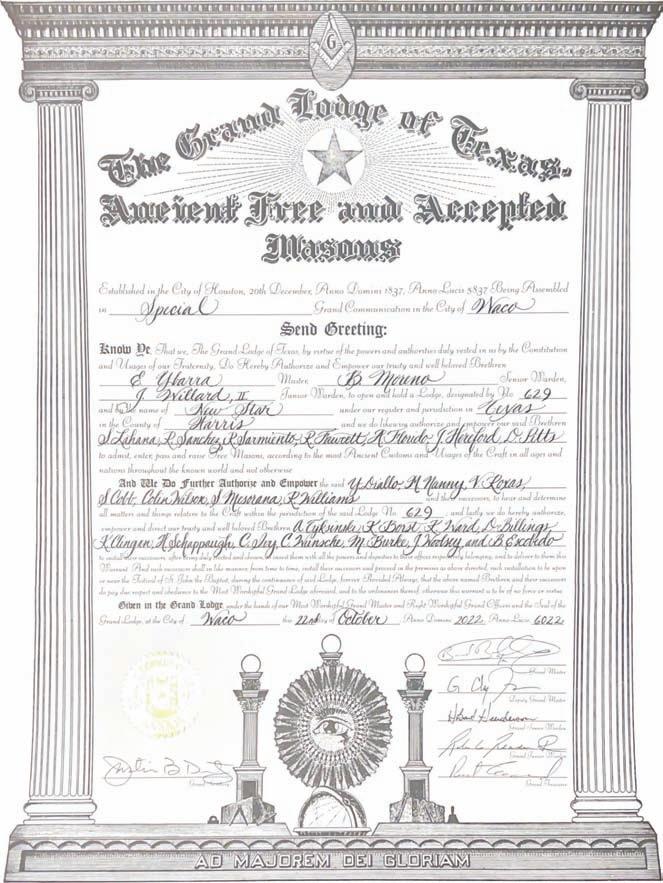
contemplation of the human experience and the great mystery of existence.
“The universe is the smallest hole a man can hide his head in,” G.K. Chesterton once quipped. In that expanse, every now and again, age after age, the Glory of God is made known and conceived anew in the hearts of men.
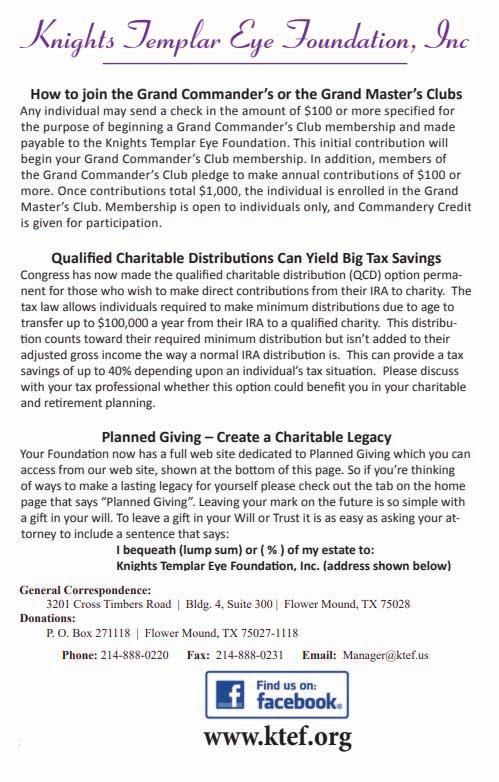
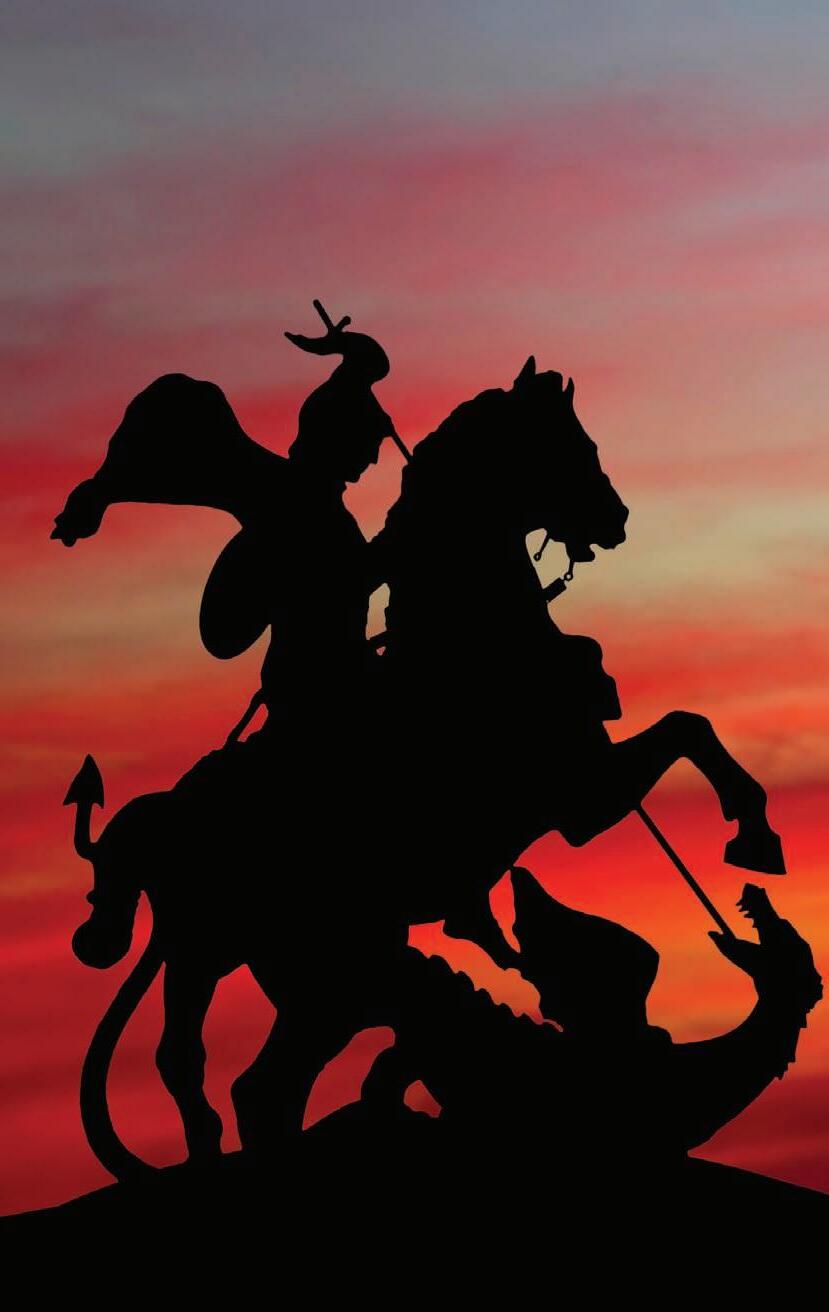
One of the benefits of being a member of Boston Commandery
No. 2 is that there are a number of visitors who enjoy getting a tour of our armory on the sixth floor of the Grand Lodge Building in downtown Boston. The visitors come from all over the country and, indeed, from jurisdictions far from our own. It is a mutual opportunity to learn from each other. This day was no exception. On rounding a corner of the Commander’s Office, our visitor spied a large and impressive bronze.
“Whatever is that and where did it come from?” he asked.

“It was given to Most Worshipful
Brother and Sir Knight Samuel Crocker Lawrence by the Grand Encampment of Knights Templar on the occasion of the 1895 Triennial Meeting held in Boston. Brother Lawrence served as Grand Master from 1881-1883 and as the Grand Commander of the Grand Commandery of Massachusetts and Rhode Island in 1884,” I replied. “He in turn left it in the perpetual care of Boston Commandery. It is a rendition of St. George slaying the Dragon.”
“What has St. George and the Dragon to do with Knights Templar?” he asked. And that is when he began to educate me. What, indeed?
Little is known about the historical figure of St. George. What is known is that there was an officer of the Roman Praetorian Guard named George at the time of the Emperor Diocletian who reigned from 284-313 AD. According to some scholars, by the third century, the Roman army comprised soldiers drawn from almost everywhere except Rome.2 Many came from the wildest parts of the empire and were, to the Senators and the Emperor, unreliable as to their loyalties. Legions ruled and the Senate was dead with virtually every freeman a “citizen.”
The early Christian Church, like many minorities, was considered suspect. They met in secret as a means of protection. Their numbers were growing, however, and that brought unwanted attention from the Roman authorities. Persecutions began. There was a great deal of unrest throughout the Empire.
A soldier called Datinius, under Diocletian, provided defense and some sense of stability, rising through the military to become Provost and lead the Praetorian Guard.3 He was “ignorant of letters, careless of laws, and the rusticity of his appearance betrayed the meanness of [the man]. War was the only art he professed. He and his successor, Maximian, did the dirty work of the Emperor without pity and with fearful consequences. He was the instrument of every act of cruelty which the Emperor might suggest and disclaim.”4 It would seem that
he well earned the nickname, “The Dragon.”
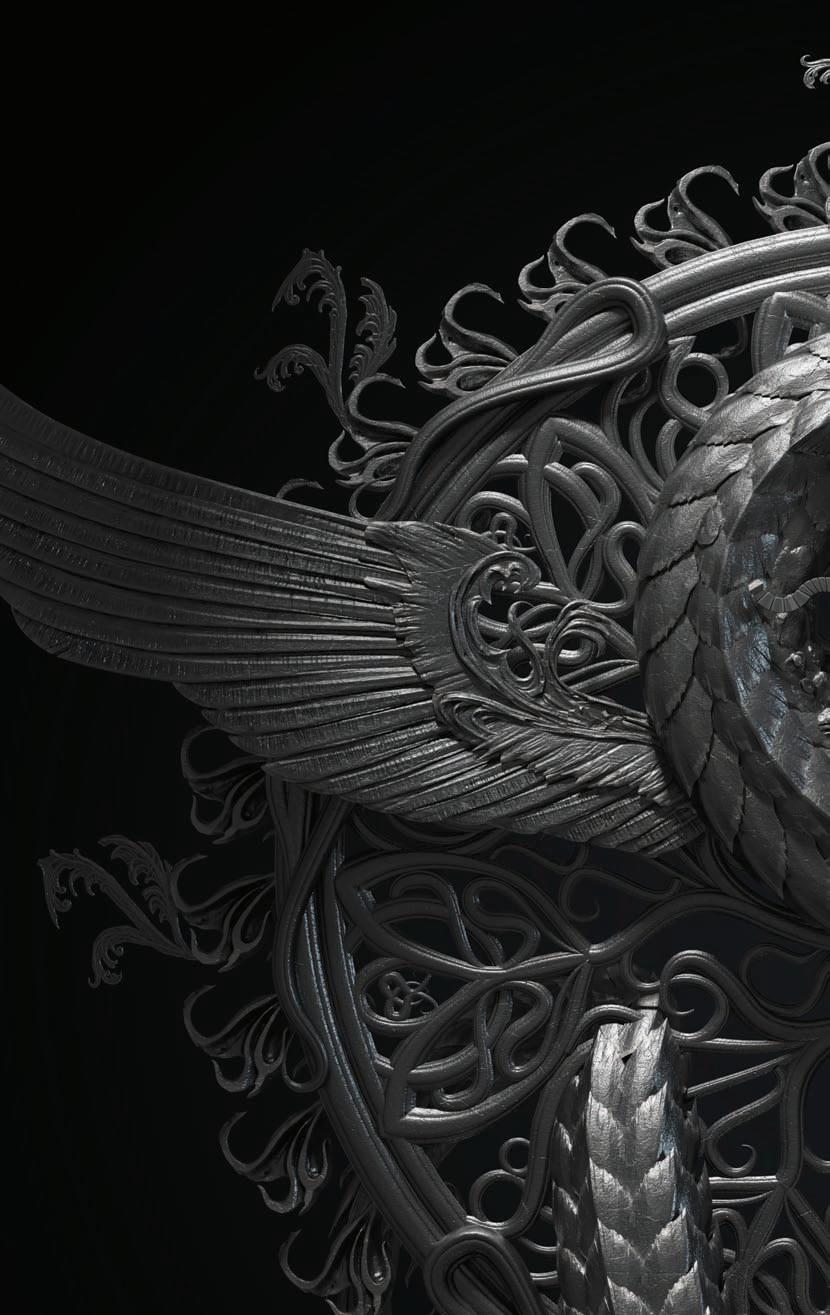
The Christians were a major target of Diocletian. Datinius mounted a campaign to kill as many men, women, and children as possible who refused to renounce their faith. Further, the Emperor declared that no Christian could be a Roman soldier. All soldiers were to immediately renounce their religion in support of Rome.
One very popular and successful Roman officer was George – a Christian by faith. He refused to recant his faith and was martyred. In the aftermath of his martyrdom, thousands of Romans converted to Christianity, including the wife of Datinius.
There are several variations of the Legend of St. George and the Dragon. There is a Greek version dating back to the fifth century and a Latin version which circulated in the West during the sixth century.5 The Middle English version is probably the best known today and is an account from the Twelfth Century.6 This is known as Legenda Aurea de Bordeaux by James [or Jacobus] de Voragine with a modern translation by William Caxton. The following account, frequently referred to as the Golden Legend, is the most influential.
According to this account, St. George was born in Cappodocia. Riding in Lybia in the city of Sylene, he heard about a dragon which survived in a nearby marsh. The local
people were assuaging the dragon by supplying two sheep a day for food. However, over time, the dragon was no longer satisfied with sheep and, instead, demanded to be fed children from the local citizenry; first one, then two per day. The king of the locals yielded to pressure from the people and declared that selection of the children to be sacrificed would be by lottery. That proceeded until the King’s own daughter was selected. The hapless girl was dressed as for a wedding and sent off to the dragon to meet her fate.
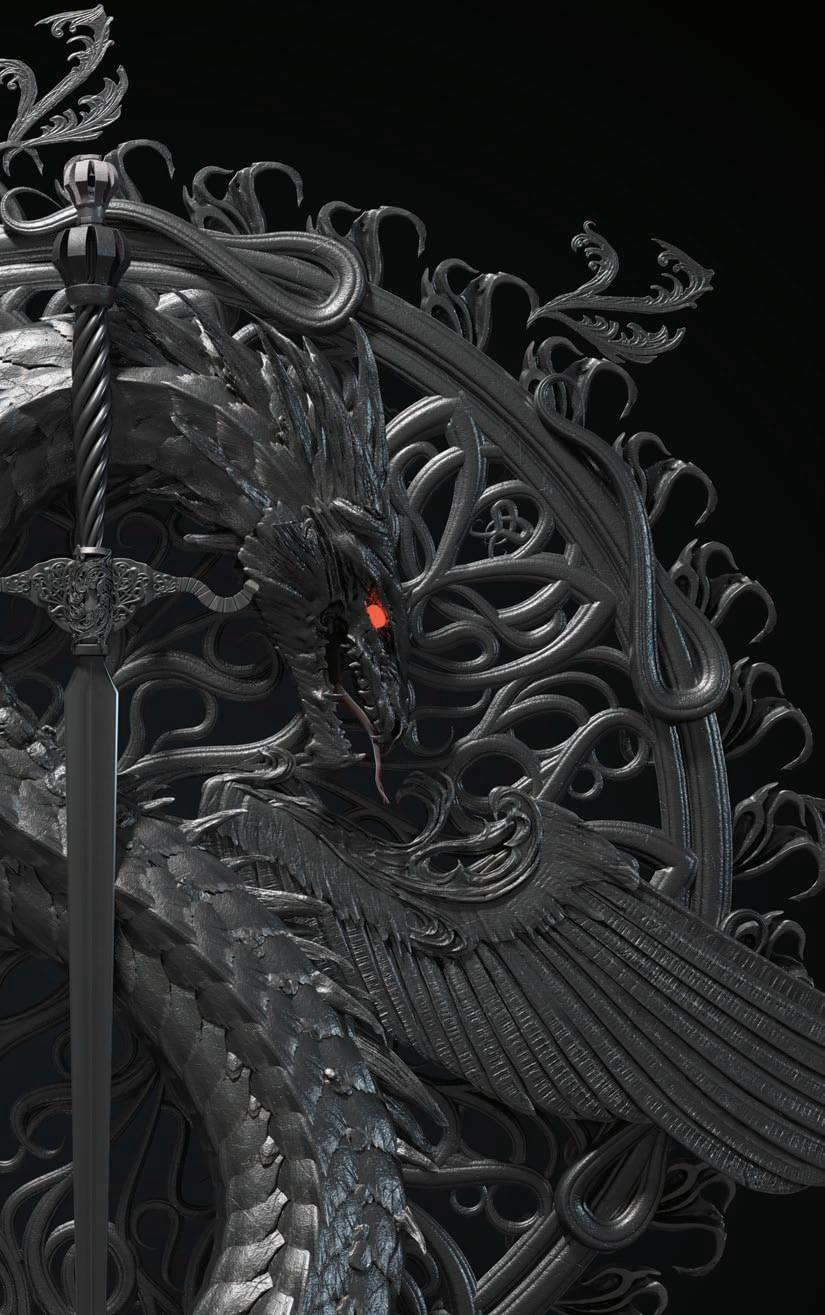
St. George, hearing of the situation, rode out to do battle with the dragon and rescue the maiden. He first makes the sign of the cross before battle. He then manages to transfix the dragon with a single blow of his lance. He takes the girdle of the maiden and puts it around the throat of the dragon and leads it back to the city. The people, terrified at the sight, panicked. So St. George gives a powerful sermon and allays their fears for, if they became believers in Jesus Christ and were baptized, St. George would slay the dragon. The people agreed; fifteen thousand men, women, and children were baptized Christians.
The king gave St. George treasure. St. George gave it to the poor. Before his departure from the kingdom, however, he made four demands: first, that the King would build and maintain Christian churches; second, that the King would honor the Christian priests; third, that the King and all subjects would diligently attend religious
services there; and fourth, that the King and all others would show compassion to the poor.
Over several centuries, this story was held up as a metaphor for the triumph of good over evil, of Christ over Satan, and St. George came to be seen as a valiant warrior in the traditions of chivalry and the knighthood promulgated among the aristocracy. Indeed, although not historically supported, there is a tradition that, during the Crusades, King Richard the Lionheart and St. Demetrius witnessed St. George intervene on behalf of the Christian knights and defeat the Muslims at the Battle of Antioch in 1088.6
There is no historical doubt, however, that upon Richard’s return to England he established a St. George’s Day in the calendar year of 1222. Later, subsequent kings declared St. George to be the patron saint of knights of England: King Edward III founded the Order of the Garter with St. George as patron in 1344-48, and King Henry V elevated St. George’s feast day to one of first rank, declaring it a national holiday in 1415.
Thus, the legend transfers the original early Christian legend of St. George and the dragon into a metaphorical formula for knightly chivalry.7 It has persisted as such ever since, which explains the bronze work in Boston Commandery’s armory as well as the character of the Grand Commandery of Massachusetts and Rhode Island’s official seal.
25 knight templarAllegory and metaphor relay meaning subject to various interpretations. Certainly, in Freemasonry, there are many such examples for the individual Brother to interpret according to his own experience and determination. The story of St. George slaying the dragon is no less an example.

To the Christians of the early fifth and sixth centuries, the reality of trying to survive persecution was a mortal endeavor. The biblical dictates to uphold faith and proclaim Jesus Christ as savior had severe consequences. But the promise of eternal life was stronger. The story of St. George is perhaps illustrative of Jesus Christ slaying the Satanic dragon of death, sustaining the Christian church – the “Bride of Christ.” The fable incentivizes conversion, to defend the faith in martyrdom in the confidence of the ultimate victory over death itself.
With the rise of the age of chivalry and the period of the Crusades, the story takes on a new layered meaning. The old story
of St. George slaying the dragon becomes akin to knights intervening in battle with the Muslim armies. Thanks to the English kings, St. George became the patron saint of knighthood in general and the patron saint of England in particular. The chivalric values of modesty, bravery, defense of the weak, compassion for the less fortunate, and promotion of the Christian religion are front and center wherever the story is told and retold. As such, it became indelibly linked to the Knights Templar.
But what are we to make of this story and what possible connection should modern Knights Templar find in its telling? St. George represents the epitome of knighthood. He is the archetype of chivalry, illustrative of what we declare in our own vows to the Order and to each other. They include the following values:
• A firm belief in the Lord Jesus

Christ and His Church
• Courage to confront evil despite the odds of success
• A commitment to help those less fortunate
• A desire to do what is right and modestly disclaim personal aggrandizement
• A c ommitment to put on the whole armor of God and ride forth every day
• An impetus to come to the rescue of others, no matter their circumstances
• The imperative to fight the good fight no matter how small or how large the battlefield
Maybe this is why the Grand Commandery of Massachusetts and Rhode Island selected St. George slaying the Dragon to be the obverse of their Great Seal.
Every time a Knight Templar from this jurisdiction sees that seal, he will be reminded of these knightly values.
1. Butler. 1993. "One Hundred Saints – Their Lives and Likenesses." Lives of the Saints and Great Works Western of Art: 82-84. Bullfinch Press/Little Brown & Co.: Boston.
2. OlliviaCoolidge, Lives of Famous Romans (Boston: Houghton Miflin Co., 1965), 189-196, 204-5.
3. Edward Gibbon, The Decline and Fall of the Roman Empire (Random House: New York, 2010), vol. I, 303-306. .
4. Ibid
5. Whately, Thompson , and Robert Upchurch, eds., "The Martyrdom of St. George," Middle English Text Series (University of Rochester: River Campus Libraries, 2004).
6. Https://en.wikipedia.org/w/ index.php?title=Saint_George_and_the_ Dragon&oldid=852261938; updated 17 July 2018.
7. Nick Rabiipour, "St. George: A Courageous Life of Virtue" (The Catholic Company, 2017), https://www.catholiccompany.com/magazine/saint-george-courageous-faithful-6043#

The name of Victor de Lanneau may not be a household name in America, but he is remembered in France.
Pierre Antoine Victor de Lanneau de Marey was born December 25, 1758, in Bard-lesEposisses, France, and died on March 31, 1830, in Paris.
Due to the wishes of his family, he entered the Order of Theatines, a Catholic order founded after the Council of Trent (1545-1563). Prior to that time, there was no seminary or systematic program of studies for the formation of new priests. Lanneau’s scholarship grew. When he finished his studies, he became a professor at, and then director of, the College of Tulle.
It was at Tulle that he took part in the beginnings of the French Revolution. He was a founding member of the Society of Friends of the Constitution. Elected to the municipality, he clashed philosophically with the local bishop. He drifted from place to place, and in 1791, he agreed to assist in serving the town of Autin as episcopal vicar.1 Within a relatively short time, Lanneau left the priesthood and became Mayor of Autin. He got married, hoping to start a family. In 1792, he became a Freemason associated with the Grand Orient of France.2
Victor de Lanneau was deeply interested
in a free and unhindered education system. In 1798, he bought the Collège Saint-Barbe in the fifth arrondissement of Paris from the monks of the Abbey of Vezelay, which he directed until his death.
In 1880, rue Saint-Hilaire, next to the Collège Sainte-Barbe, was renamed in his honor.3 Collège Sainte-Barbe is the oldest surviving college on the Sainte-Genevieve mountain (established in 1460). It was founded in the former Hotel des Chalons, rue de Reims (this street has since disappeared). It is perhaps worth noting that, several hundred years before Lanneau owned the property, both Saint Ignatius of Loyola and Saint Francis Xavier (founders off the Society of Jesus) were students there.
Victor de Lanneau took the oath to the constitution (of France) in 1791. He joined the Grand Orient de France in Paris in 1795. It is evident that he took his Masonic vows seriously and many students, teachers, and even modern researchers have benefited from his dedication and his presence. The Barbiste enthusiasm is kept alive by the Friendly Society of Old Barbistes (sort of an alumni fraternity) since 1880. It is the oldest association of alumni in all of France.4
3. Ibid., 12
., 10
4. College Sainte-Barbe History: https://artsandculture.google.com/entity/collegesainte-barbe/m08wj_x?hl=en Accessed 4 December 2022.
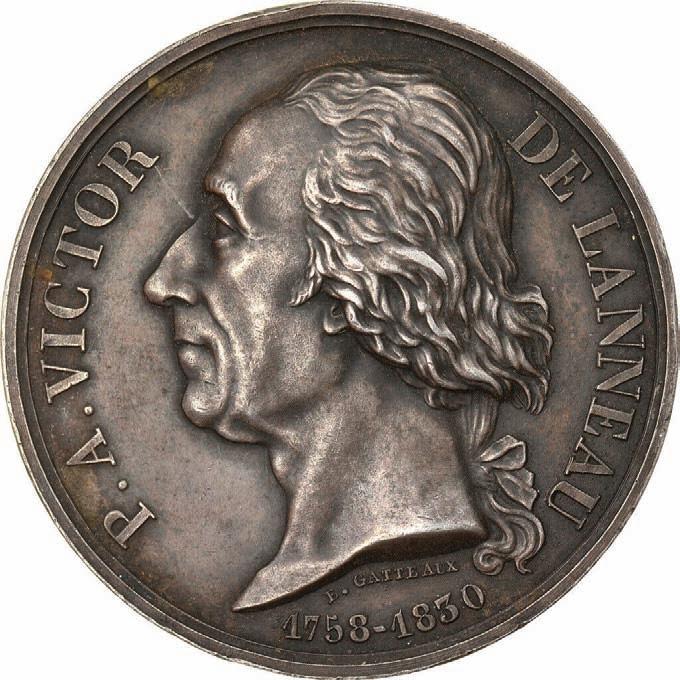
As we approach the final months of this campaign, I am proud of what we have accomplished so far. As of the end of week 15, December 31, 2022, we stood at $839,516.69. This compares to week 15 in the 54th which was $957,367.63 and $800,643.77 in the 53rd.
With these figures, we are on pace for another successful campaign.
The last several articles, I have promoted various programs such as Life Sponsor $30, Grand Commander’s Club $100, Grand Master’s Club $1,000. This month I want to promote the awards program for larger gifts. Foundations, corporations, or individuals contributing $10,000 receive a Golden Chalice, and foundations, corporations, or individuals contributing $25,000 receive a Grand Master’s Sword of Merit.

Remember giving to the Grand Master’s Club cumulates until you reach $25,000 and then you will have the honor of receiving the Grand Master’s Sword of Merit. The Grand Master’s Club doesn’t cumulate for the Golden Chalice Award.
Last month I shared the top four Grand jurisdictions' standings. This time I will share the top five Grand jurisdictions as of January 1, the Grand Commandery of Ohio is still ranked number one ($81,481.42) with Pennsylvania ranked number two ($51,876.04),

Georgia ranked three ($49,628.06), Texas ranked fourth ($46,473.59), and Florida is in the fifth position ($40,336.94).
I believe that competition is good and encourage all to compete. I look forward to seeing where the final numbers land and who claims the top five spots.
As we move to the final months of the campaign, please consider those less fortunate than ourselves and the tremendous difference you can make in people’s lives by supporting the work of the Foundation.
A gentle reminder that this Voluntary Campaign will end April 30 and all contributions received in the Eye Foundation office, Flower Mound, Texas, postmarked on or before May 15, will be counted.
Sir Knights, let’s do it now!
A man's heart deviseth his way: but the LORD directeth his steps.
– Proverbs 16:9 KJV
In Christ Service,
Paul W. Friend, PGC, KTCH Chairman, 55th Annual Voluntary CampaignNovember 1, 2022 – November 30, 2022
CA David A. Lane
CA Richard E. Thornton
DC Roger E. Cundiff
FL Robert Coleman III
FL Stephen L. Karr
FL Benjamin P. Minichino
GA James D. Arnold
GA Stephen W. Larson Jr.
IL Robert W. Bigley
IN Irvan Boeglin
ME Edward A. Caron Jr.
MN Roberto S. Gardiner
MO James E. Ashby
NV Dustin R. Ebaugh
NJ Herbert R. Wood
NY David R. Barkstedt
NC Aaron A. Absher
OH Arthur F. Koeniger
OH James K. Lawson
OH Kyle A. Markel
OH Douglas K. McIe
OK Mark K. McFadden
OR Courtland B. Brooks
OR Charles Cornell
PA Brian L. Daniels
PA Theodore D. Hervol
PA Larry D. Horath
PA John S. Stanton
PA Edward W. Stenger
SC Hoyt B. Palmer
SC Richard A. Wesner
TN Larry W. Mick
TN Roy T. Sutton III
TX Tommy C. Chapman
UT Charles E. Warren Sr.
VA Joel T. Bundy
WV Robert L. Hammond
WY Richard N. Lewis
AL Lawrence R. Levin Jr.
CA Marion P. Rogers
FL Robert Christian
FL Benjamin P. Minichino
FL Paul F. Ritchie
KS Justin D. Crippen
MD Bradley D. Andrukitis
MN Roberto S. Gardiner
MT Robert L. Docktor
OH David W. Feller
OR Courtland B. Brooks
TN Larry W. Mick
TN Tracy A. Rhoton
TX Robert K. Toor
UT Lorenzo Tibbitts
